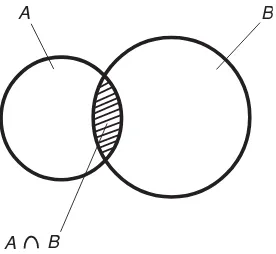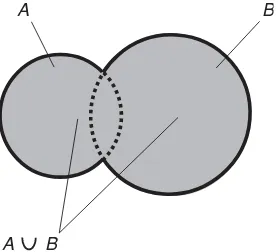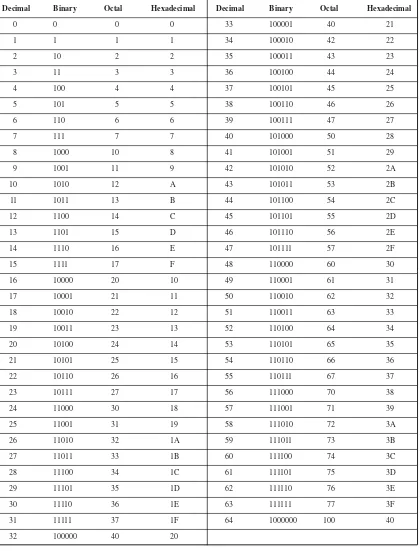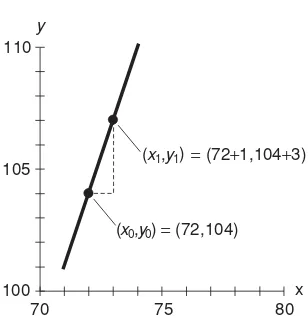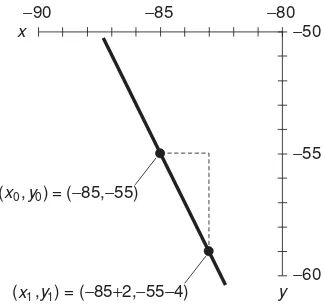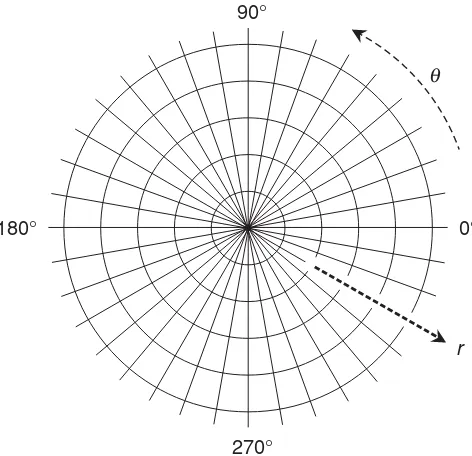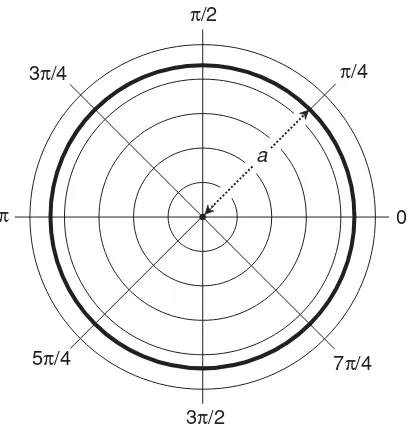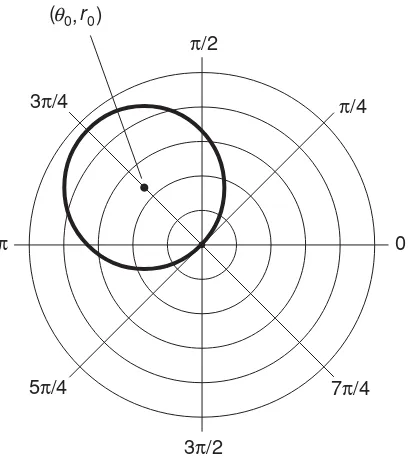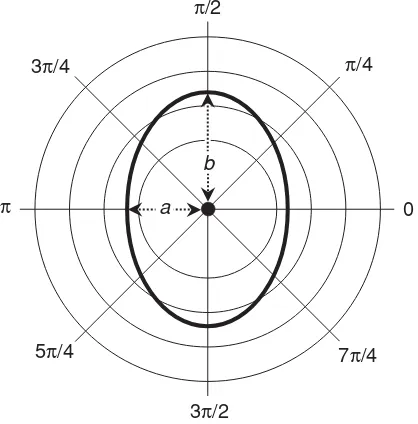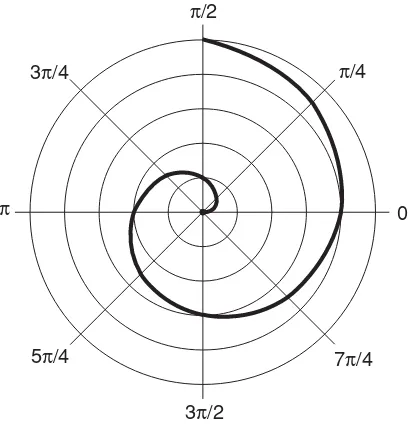Algebra Demystified Anatomy Demystified asp.net 2.0 Demystified Astronomy Demystified Biology Demystified Biotechnology Demystified Business Calculus Demystified Business Math Demystified Business Statistics Demystified C++ Demystified
Calculus Demystified Chemistry Demystified College Algebra Demystified Corporate Finance Demystified Data Structures Demystified Databases Demystified
Differential Equations Demystified Digital Electronics Demystified Earth Science Demystified Electricity Demystified Electronics Demystified
Environmental Science Demystified Everyday Math Demystified
Forensics Demystified Genetics Demystified Geometry Demystified
Home Networking Demystified Investing Demystified
Java Demystified JavaScript Demystified Linear Algebra Demystified Macroeconomics Demystified
Math Word Problems Demystified Medical Terminology Demystified Meteorology Demystified Microbiology Demystified Microeconomics Demystified Nanotechnology Demystified OOP Demystified Options Demystified
Organic Chemistry Demystified Personal Computing Demystified Pharmacology Demystified Physics Demystified Physiology Demystified Pre-Algebra Demystified Precalculus Demystified Probability Demystified
Project Management Demystified Psychology Demystified
Quality Management Demystified Quantum Mechanics Demystified Relativity Demystified
Robotics Demystified Six Sigma Demystified SQL Demystified Statistics Demystified Technical Math Demystified Trigonometry Demystified UML Demystified
DEMYSTIFIED
STAN GIBILISCO
McGRAW-HILL
The material in this eBook also appears in the print version of this title: 0-07-145949-9.
All trademarks are trademarks of their respective owners. Rather than put a trademark symbol after every occurrence of a trade-marked name, we use names in an editorial fashion only, and to the benefit of the trademark owner, with no intention of infringe-ment of the trademark. Where such designations appear in this book, they have been printed with initial caps.
McGraw-Hill eBooks are available at special quantity discounts to use as premiums and sales promotions, or for use in corporate training programs. For more information, please contact George Hoare, Special Sales, at george_hoare@mcgraw-hill.com or (212) 904-4069.
TERMS OF USE
This is a copyrighted work and The McGraw-Hill Companies, Inc. (“McGraw-Hill”) and its licensors reserve all rights in and to the work. Use of this work is subject to these terms. Except as permitted under the Copyright Act of 1976 and the right to store and retrieve one copy of the work, you may not decompile, disassemble, reverse engineer, reproduce, modify, create derivative works based upon, transmit, distribute, disseminate, sell, publish or sublicense the work or any part of it without McGraw-Hill’s prior con-sent. You may use the work for your own noncommercial and personal use; any other use of the work is strictly prohibited. Your right to use the work may be terminated if you fail to comply with these terms.
THE WORK IS PROVIDED “AS IS.” McGRAW-HILL AND ITS LICENSORS MAKE NO GUARANTEES OR WARRANTIES AS TO THE ACCURACY, ADEQUACY OR COMPLETENESS OF OR RESULTS TO BE OBTAINED FROM USING THE WORK, INCLUDING ANY INFORMATION THAT CAN BE ACCESSED THROUGH THE WORK VIA HYPERLINK OR OTH-ERWISE, AND EXPRESSLY DISCLAIM ANY WARRANTY, EXPRESS OR IMPLIED, INCLUDING BUT NOT LIMITED TO IMPLIED WARRANTIES OF MERCHANTABILITY OR FITNESS FOR A PARTICULAR PURPOSE. McGraw-Hill and its licensors do not warrant or guarantee that the functions contained in the work will meet your requirements or that its operation will be uninterrupted or error free. Neither McGraw-Hill nor its licensors shall be liable to you or anyone else for any inaccuracy, error or omission, regardless of cause, in the work or for any damages resulting therefrom. McGraw-Hill has no responsibility for the con-tent of any information accessed through the work. Under no circumstances shall McGraw-Hill and/or its licensors be liable for any indirect, incidental, special, punitive, consequential or similar damages that result from the use of or inability to use the work, even if any of them has been advised of the possibility of such damages. This limitation of liability shall apply to any claim or cause what-soever whether such claim or cause arises in contract, tort or otherwise.
Preface
xiii
Acknowledgments
xv
CHAPTER 1
Numbering Systems
1
Sets
1
Denumerable Number Sets
6
Bases 10, 2, 8, and 16
10
Nondenumerable Number Sets
15
Special Properties of Complex Numbers
20
Quick Practice
24
Quiz
27
CHAPTER 2
Principles of Calculation
29
Basic Principles
29
Miscellaneous Principles
33
Advanced Principles
37
Approximation and Precedence
42
Quick Practice
46
Quiz
47
CHAPTER 3
Scientific Notation
51
Powers of 10
51
Calculations in Scientific Notation
57
Significant Figures
61
Quick Practice
65
Quiz
67
CHAPTER 4
Coordinates in Two Dimensions
71
Cartesian Coordinates
71
Simple Cartesian Graphs
74
Polar Coordinates
80
Navigator’s Coordinates
87
Coordinate Conversions
89
Other Coordinate Systems
92
Quick Practice
99
Quiz
101
CHAPTER 5
Coordinates in Three Dimensions
105
Cartesian 3-Space
105
Other 3D Coordinate Systems
108
Hyperspace
113
Quick Practice
119
Quiz
122
CHAPTER 6
Equations in One Variable
125
Operational Rules
125
Linear Equations
127
Quadratic Equations
130
Higher-Order Equations
134
Quick Practice
137
Quiz
139
CHAPTER 7
Multivariable Equations
143
2
×
2 Linear Equations
143
3
×
3 Linear Equations
148
2
×
2 General Equations
152
Graphic Solution of Pairs of Equations
154
Quick Practice
158
CHAPTER 8
Perimeter and Area in Two Dimensions
163
Triangles
163
Quadrilaterals
166
Regular Polygons
171
Circles and Ellipses
172
Other Formulas
175
Quick Practice
180
Quiz
182
CHAPTER 9
Surface Area and Volume in
Three Dimensions
185
Straight-Edged Objects
185
Cones and Cylinders
191
Other Solids
198
Quick Practice
202
Quiz
204
CHAPTER 10
Boolean Algebra
207
Operations, Relations, and Symbols
207
Truth Tables
212
Some Boolean Laws
216
Quick Practice
220
Quiz
223
CHAPTER 11
Trigonometric Functions
227
The Unit Circle
227
Primary Circular Functions
229
Secondary Circular Functions
232
The Right Triangle Model
234
Trigonometric Identities
237
Quick Practice
245
CHAPTER 12
Vectors in Two and Three Dimensions
251
Vectors in the Cartesian Plane
251
Vectors in the Polar Plane
256
Vectors in Cartesian 3-Space
259
Standard Form of a Vector
264
Basic Properties
267
Other Properties
275
Quick Practice
278
Quiz
280
CHAPTER 13
Logarithmic and Exponential Functions
283
Logarithmic Functions
284
How Logarithmic Functions Behave
287
Exponential Functions
290
How Exponential Functions Behave
293
Quick Practice
298
Quiz
300
CHAPTER 14
Differentiation in One Variable
305
Definition of the Derivative
305
Properties of Derivatives
311
Properties of Curves
315
Derivatives of Wave Functions
323
Quick Practice
329
Quiz
331
CHAPTER 15
Integration in One Variable
337
What Is Integration?
337
Basic Properties of Integration
341
A Few More Formulas
343
Integrals of Wave Functions
348
Examples of Definite Integration
354
Quick Practice
358
Final Exam
365
Answers to Quiz and Exam Questions
395
Suggested Additional Reading
399
This book is written for people who want to refresh or improve their mathemat-ical skills, especially in fields applicable to science and engineering. The course can be used for self-teaching without the aid of an instructor, but it can also be useful as a supplement in a classroom, tutored, or home-schooling environment. If you are changing careers, and your new work will involve more mathematics than you’ve been used to doing, this book should help you prepare.
If you want to get the most out of this book, you should have completed high-school algebra, high-school geometry and trigonometry, and a first-year course in calculus. You should be familiar with the concepts of rational, real, and complex numbers, linear equations, quadratic equations, the trigonometric func-tions, coordinate systems, and the differentiation and integration of functions in a single variable.
This book contains plenty of examples and practice problems. Each chapter ends with a multiple-choice quiz. There is a multiple-choice final exam at the end of the course. The questions in the quizzes and the exam are similar in for-mat to the questions in standardized tests.
The chapter-ending quizzes are open-book. You may refer to the chapter texts when taking them. When you think you’re ready, take the quiz, write down your answers, and then give your list of answers to a friend. Have the friend tell you your score, but not which questions you got wrong. The answers are listed in the back of the book. Stick with a chapter until you get most, and preferably all, of the quiz answers correct.
The final exam contains questions drawn uniformly from all the chapters. It is a closed-book test. Don’t look back at the text when taking it. A satisfactory score is at least three-quarters of the answers correct (I suggest you shoot for 90 percent). With the final exam, as with the quizzes, have a friend tell you your score without letting you know which questions you missed. That way, you will
xiii
not subconsciously memorize the answers. You can check to see where your knowledge is strong and where it is weak.
I recommend that you complete one chapter a week. An hour or two daily ought to be enough time for this. When you’re done with the course, you can use this book as a permanent reference.
Suggestions for future editions are welcome.
I extend thanks to my nephew Tony Boutelle, a student at Macalester College in St. Paul. He spent many hours helping me proofread the manuscript, and he offered insights and suggestions from the point of view of the intended audience.
xv
CHAPTER
1
Numbering Systems
This chapter covers the basic properties of sets and numbers. Familiarity with these concepts is important in order to gain a solid working knowledge of applied mathematics. For reference, and to help you navigate the notation you’ll find in this book, Table 1-1 lists and defines the symbols commonly used in tech-nical mathematics.
Sets
Aset is a collection or group of definable elementsor members. A set element can be anything—even another set. Some examples of set elements in applied mathematics and engineering are:
•
Points on a line•
Instants in timeSymbol Description
( ) Quantification; read “ the quantity”
[ ] Quantification; used outside ( )
{ } Quantification; used outside [ ]
{ } Braces; objects between them are elements of a set
⇒ Logical implication or “ if/then” operation; read
“implies”
⇔ Logical equivalence; read “ if and only if”
∀ Universal quantifier; read “For all” or “For
every”
∃ Existential quantifier; read “For some”
: Logical expression; read “such that”
Logical expression; read “such that”
& Logical conjunction; read “and”
∨ Logical disjunction; read “or”
¬ Logical negation; read “not”
N The set of natural numbers
Z The set of integers
Q The set of rational numbers
R The set of real numbers
ℵ Transfinite (or infinite) cardinal number
∅ The set with no elements; read “ the empty set”
or “ the null set”
∩ Set intersection; read “intersect”
∪ Set union; read “ union”
⊂ Proper subset; read “ is a proper subset of”
Symbol Description
⊆ Subset; read “ is a subset of”
∈ Element; read “ is an element of” or “ is a
mem-ber of”
∉ Nonelement; read “ is not an element of” or “ is
not a member of ”
= Equality; read “equals” or “ is equal to”
≠ Not-equality; read “ does not equal” or “ is not
equal to”
≈ Approximate equality; read “ is approximately
equal to”
< Inequality; read “ is less than”
≤ Equality or inequality; read “ is less than or
equal to”
> Inequality; read “ is greater than”
≥ Equality or inequality; read “ is greater than or
equal to”
+ Addition; read “ plus”
− Subtraction, read “ minus”
× Multiplication; read “ times” or “ multiplied by”
∗ Multiplication; read “ times” or “ multiplied by”
· Multiplication; read “ times” or “ multiplied by”
÷ Quotient; read “ over” or “divided by”
/ Quotient; read “ over” or “divided by”
! Product of all natural numbers from 1 up to a
certain value; read “ factorial”
× Cross (vector) product of vectors; read “ cross”
• Dot (scalar) product of vectors; read “dot”
•
Coordinates in a plane.•
Coordinates in space.•
Points, lines, or curves on a graph.•
Digital logic states.•
Data bits, bytes, or characters.•
Subscribers to a network.•
Wind-velocity vectors at points in the eyewall of a hurricane.•
Force vectors at points along the length of a bridge.If an element ais contained in a set A, then the fact is written like this:
a∈A
SET INTERSECTION
Theintersectionof two sets A andB, written A ∩B, is the set C consisting of the elements in both sets A andB. The following statement is valid for every element x:
x∈Cif and only if x∈Aandx∈B
SET UNION
Theunion of two sets A and B, written A ∪ B, is the set C consisting of the elements in set A or set B(or both). The following statement is valid for every elementx:
x∈Cif and only if x∈Aorx∈B
COINCIDENT SETS
Two nonempty sets AandBarecoincidentif and only if they are identical. That means that for all elements x, the following statements are both true:
Ifx ∈A, then x∈B
DISJOINT SETS
Two sets AandBaredisjointif and only if both sets contain at least one element, but there is no element that is in both sets. All three of the following conditions must be met:
A≠ ∅ B≠ ∅ A∩B= ∅
where∅denotes the empty set, also called the null set.
VENN DIAGRAMS
The intersection and union of nonempty sets can be conveniently illustrated by Venn diagrams. Figure 1-1 is a Venn diagram that shows the intersection of two sets that are nondisjoint (they overlap) and noncoincident (they are not identi-cal). Set A∩Bis the cross-hatched area, common to both sets A andB. Figure 1-2 shows the union of the same two sets. Set A ∪Bis the shaded area, repre-senting elements that are in set Aor in set B, or both.
SUBSETS
A setAis a subsetof a set B, written A⊆B, if and only if any element x in set Ais also in set B. The following logical statement holds true for all elements x:
Ifx∈A, then x∈B
A B
A B
Fig. 1-1. The intersection of two
PROPER SUBSETS
A setAis a proper subsetof a set B, written A⊂B, if and only if any element x in set A is in set B, but the two sets are not coincident. The following logical statements both hold true for all elements x:
Ifx ∈A, then x∈B A≠B
CARDINALITY
Thecardinalityof a set is the number of elements in the set. The null set has zero cardinality. The set of data bits in a digital image, stars in a galaxy, or atoms in a chemical sample has finite cardinality. Some number sets have denumerably infinite cardinality. Such a set can be fully defined by a listing scheme. An example is the set of all counting numbers {1, 2, 3, . . . }. Not all infinite sets are denumerable. There are some sets with non-denumerably infinite cardinality. This kind of set cannot be fully defined in terms of any listing scheme. An example is the set of all real numbers, which are those values that represent mea-surable physical quantities (and their negatives).
PROBLEM 1-1
Find the union and the intersection of the following two sets:
S ={2, 3, 4, 5, 6} T={4, 5, 6, 7, 8}
A B
A B
Fig. 1-2. The union of two non-disjoint,
SOLUTION 1-1
The union of the two sets is the set S∪Tconsisting of all the elements in one or both of the sets SandT. It is only necessary to list an element once if it happens to be in both sets. Thus:
S∪T ={2, 3, 4, 5, 6, 7, 8}
The intersection of the two sets is the set S∩Tconsisting of all the ele-ments that are in both of the sets SandT:
S∩T={4, 5, 6}
PROBLEM 1-2
In Problem 1-1, four sets are defined: S,T,S∪T, and S∩T. Are there any cases in which one of these sets is a proper subset of one or more of the others? If so, show any or all examples, and express these exam-ples in mathematical symbology.
SOLUTION 1-2
SetSis a proper subset of S∪T. Set Tis also a proper subset of S∪T. We can write these statements formally as follows:
S⊂(S∪T) T⊂(S∪T)
It also turns out, in the situation of Problem 1-1, that the set S∩Tis a proper subset of S, and the set S∩Tis a proper subset of T. In formal symbology, these statements are:
(S∩T)⊂S (S∩T)⊂T
The parentheses are included in these symbolized statements in order to prevent confusion as to how they are supposed to be read. A mathematical purist might point out that, in these examples, parenthe-ses are not necessary, because the meanings of the statements are evi-dent from their context alone.
Denumerable Number Sets
sets with denumerable cardinality. This means that they can each be arranged in the form of an infinite (open-ended) list in which each element can be assigned a counting number that defines its position in the list.
NATURAL NUMBERS
The natural numbers, also known as whole numbers, are built up from a starting point of 0. The set of natural numbers is denoted N, and is commonly expressed like this:
N={0, 1, 2, 3, . . . , n, . . . }
In some texts, zero is not included, so the set of natural numbers is defined as follows:
N={1, 2, 3, 4, . . . , n, . . . }
This second set, starting with 1 rather than 0, is sometimes called the set of counting numbers.
The natural numbers can be expressed as points along a horizontal half-line or ray, where quantity is directly proportional to displacement (Fig. 1-3). In the illustration, natural numbers correspond to points where hash marks cross the ray. Increasing numerical values correspond to increasing displacement toward the right. Sometimes the ray is oriented vertically, and increasing values correspond to displacement upward.
INTEGERS
The set of natural numbers can be duplicated and inverted to form an identical, mirror-image set:
−N={0,−1,−2,−3, . . . , −n, . . . }
0 1 2 3 4 5 6 7 8 9
Numerical value is proportional to displacement
The union of this set with the set of natural numbers produces the set of inte-gers, commonly denoted Z:
Z=N∪ −N={. . . , −n, . . . , −2,−1, 0, 1, 2, . . . , n, . . . }
Integers can be expressed as points along a horizontal line, where positive quantity is directly proportional to displacement toward the right, and negative quantity is directly proportional to displacement toward the left (Fig. 1-4). In the illustration, integers correspond to points where hash marks cross the line. Sometimes a vertical line is used. In most such cases, positive values correspond to upward displacement, and negative values correspond to downward displace-ment. The set of natural numbers is a proper subset of the set of integers. Stated symbolically:
N⊂Z
RATIONAL NUMBERS
A rational number (the term derives from the word ratio) is a number that can be expressed as, or reduced to, the quotient of two integers, a andb, where bis positive. The standard form for a rational number ris:
r=a/b
The set of all possible quotients of this form composes the entire set of rational numbers, denoted Q. Thus, we can write:
Q={x|x=a/b, where a∈Z,b∈Z, and b > 0}
0 2 4 6 8
−8 −6 −4 −2
Negative integers Positive integers
“Center” of string of points
The set of integers is a proper subset of the set of rational numbers. The natural numbers, the integers, and the rational numbers have the following relationship:
N⊂Z⊂Q
DECIMAL EXPANSIONS
Rational numbers can be denoted in decimal form as an integer followed by a period (radix point, also called a decimal point), and then followed by a sequence of digits. The digits to the right of the radix point always exist in either of two forms:
•
A finite string of digits beyond which all digits are zero.•
An infinite string of digits that repeat in cycles.Here are two examples of the first form, known as terminating decimal numbers:
3/4=0.750000 . . .
−9/8= −1.1250000 . . .
Here are two examples of the second form, known as nonterminating, repeat-ing decimal numbers:
1/3=0.33333 . . .
−123/999= −0.123123123 . . .
PROBLEM 1-3
Of what use are negative numbers? How can you have a quantity smaller than zero? Isn’t that like having less than none of something?
SOLUTION 1-3
PROBLEM 1-4
Express the number 2457/9999 as a nonterminating, repeating decimal.
SOLUTION 1-4
If you have a calculator that displays plenty of digits (the scientific-mode calculator in Windows XP is excellent), you can find this easily:
2457/9999=0.245724572457 . . . .
The sequence of digits 2457 keeps repeating “forever.” Note that this number is rational because it is the quotient of two integers, even though it is not a terminating decimal. That is, it can’t be written out fully in deci-mal form using only a finite number of digits to the right of the radix point.
Bases 10, 2, 8, and 16
The numbering system used by people (as opposed to computers and calcu-lators) in everyday life is the decimal number system, based on powers of 10. Machines, in contrast, generally perform calculations using numbering systems based on powers of 2.
DECIMAL NUMBERS
The decimal number system is also called modulo 10, base 10, or radix 10. Digits are elements of the set {0, 1, 2, 3, 4, 5, 6, 7, 8, 9}. The digit immediately to the left of the radix (decimal) point is multiplied by 100, or 1. The next digit
to the left is multiplied by 101, or 10. The power of 10 increases as you move
further to the left. The first digit to the right of the radix point is multiplied by a factor of 10−1, or 1/10. The next digit to the right is multiplied by 10−2, or 1/100.
This continues as you go further to the right. Once the process of multiplying each digit is completed, the resulting values are added. This is what is repre-sented when you write a decimal number. For example:
2704.53816=(2×103)+(7×102)+(0×101)+(4×100)
+(5×10−1)+(3×10−2)+(8×10−3)+(1×10−4)+(6×10−5)
BINARY NUMBERS
The binary number system is a method of expressing numbers using only the digits 0 and 1. It is sometimes called modulo 2, base 2, or radix 2. The digit immediately to the left of the radix point is the “ones” digit. The next digit to the left is a “twos” digit; after that comes the “fours” digit. Moving further to the left, the digits represent 8, 16, 32, 64, and so on, doubling every time. To the right of the radix point, the value of each digit is cut in half again and again, that is, 1/2, 1/4, 1/8, 1/16, 1/32, 1/64, and so on.
Consider an example using the decimal number 94:
94=(4×100)+(9×101)
In the binary number system the breakdown is:
1011110 =(0×20)+(1×21)+(1×22)
+(1×23)+(1×24)+(0×25)+(1×26)
When you work with a computer or calculator, you give it a decimal number that is converted into binary form. The computer or calculator does its operations with zeros and ones, which are represented by different voltages or signals in electronic circuits. When the process is complete, the machine converts the result back into decimal form for display.
OCTAL NUMBERS
Another numbering scheme, called the octal number system, has eight symbols, or 2 cubed (23). It is also called modulo 8, base 8, or radix 8. Every digit is an
element of the set {0, 1, 2, 3, 4, 5, 6, 7}. Counting thus proceeds from 7 directly to 10, from 77 directly to 100, from 777 directly to 1000, and so on. There are no numerals 8 or 9. In octal notation, decimal 8 is expressed as 10, and decimal 9 is expressed as 11.
HEXADECIMAL NUMBERS
through F, the first six letters of the alphabet. The digit set is {0, 1, 2, 3, 4, 5, 6, 7, 8, 9, A, B, C, D, E, F}. In this number system, A is the equivalent of decimal 10, B is the equivalent of decimal 11, C is the equivalent of decimal 12, D is the equivalent of decimal 13, E is the equivalent of decimal 14, and F is the equivalent of decimal 15. This system is also called modulo 16, base 16, or radix 16.
COMPARISON OF VALUES
In Table 1-2, numerical values are compared in modulo 10 (decimal), 2 (binary), 8 (octal), and 16 (hexadecimal), for the decimal numbers 0 through 64. In gen-eral, as the modulus (or number base) increases, the numeral representing a given value becomes “smaller.”
PROBLEM 1-5
Express the binary number 10011011 in decimal form.
SOLUTION 1-5
Working from right to left, the digits add up as follows:
10011011 =(1×20)+(1×21)+(0×22)+(1×23) +(1×24)+(0×25)+(0×26)+(1×27) =(1×1)+(1×2)+(0×4)+(1×8)
+(1×16)+(0×32) +(0×64)+(1×128)
=1+2+0+8+16+0+0+128
=155
PROBLEM 1-6
Express the decimal number 1,000,000 in hexadecimal form.
SOLUTION 1-6
1 1 1 1 34 100010 42 22
2 10 2 2 35 100011 43 23
3 11 3 3 36 100100 44 24
4 100 4 4 37 100101 45 25
5 101 5 5 38 100110 46 26
6 110 6 6 39 100111 47 27
7 111 7 7 40 101000 50 28
8 1000 10 8 41 101001 51 29
9 1001 11 9 42 101010 52 2A
10 1010 12 A 43 101011 53 2B
11 1011 13 B 44 101100 54 2C
12 1100 14 C 45 101101 55 2D
13 1101 15 D 46 101110 56 2E
14 1110 16 E 47 101111 57 2F
15 1111 17 F 48 110000 60 30
16 10000 20 10 49 110001 61 31
17 10001 21 11 50 110010 62 32
18 10010 22 12 51 110011 63 33
19 10011 23 13 52 110100 64 34
20 10100 24 14 53 110101 65 35
21 10101 25 15 54 110110 66 36
22 10110 26 16 55 110111 67 37
23 10111 27 17 56 111000 70 38
24 11000 30 18 57 111001 71 39
25 11001 31 19 58 111010 72 3A
26 11010 32 1A 59 111011 73 3B
27 11011 33 1B 60 111100 74 3C
28 11100 34 1C 61 111101 75 3D
29 11101 35 1D 62 111110 76 3E
30 11110 36 1E 63 111111 77 3F
31 11111 37 1F 64 1000000 100 40
The values of the digits in a whole (that is, nonfractional) hexadecimal num-ber, proceeding from right to left, are natural-number powers of 16. That means a whole hexadecimal number n16has this form:
n16=. . .+ (f×165)+(e×164)+(d×163) +(c×162)+(b×161)+(a×160)
wherea,b,c,d,e,f, . . . are single-digit hexadecimal numbers from the set {0, 1, 2, 3, 4, 5, 6, 7, 8, 9, A, B, C, D, E, F}.
In order to find the hexadecimal value of decimal 1,000,000, first find the largest power of 16 that is less than or equal to 1,000,000. This is 164=65,536.
Then, divide 1,000,000 by 65,536. This equals 15 and a remainder. The decimal 15 is represented by the hexadecimal F. We now know that the decimal number 1,000,000 looks like this in hexadecimal form:
(F×164)+(d×163)+(c×162)+(b×161)+a=Fdcba
In order to find the value of d, note that 15 × 164=983,040. This is 16,960
smaller than 1,000,000. That means we must find the hexadecimal equivalent of decimal 16,960 and add it to hexadecimal F0000. The largest power of 16 that is less than or equal to 16,960 is 163, or 4096. Divide 16,960 by 4096. This
equals 4 and a remainder. We now know that d= 4 in the above expression, so decimal 1,000,000 is equivalent to the following in hexadecimal form:
(F×164)+(4×163)+(c×162)+(b×161)+a=F4cba
In order to find the value of c, note that (F × 164)+ (4 ×163)= 983,040+
16,384 = 999,424. This is 576 smaller than 1,000,000. That means we must find the hexadecimal equivalent of decimal 576 and add it to hexadecimal F4000. The largest power of 16 that is less than or equal to 576 is 162, or 256.
Divide 576 by 256. This equals 2 and a remainder. We now know that c = 2 in the above expression, so decimal 1,000,000 is equivalent to the following in hexadecimal form:
(F×164)+(4×163)+(2×162)+(b×161)+a=F42ba
In order to find the value of b, note that (F × 164)+ (4×163)+ (2×162)=
983,040 + 16,384 + 512 = 999,936. This is 64 smaller than 1,000,000. That means we must find the hexadecimal equivalent of decimal 64 and add it to hexadecimal F4200. The largest power of 16 that is less than or equal to 64 is 161, or 16. Divide 64 by 16. This equals 4 without any remainder. We now
know that b =4 in the above expression, so decimal 1,000,000 is equivalent to hexadecimal:
There was no remainder when we found b. Thus, all the digits to the right of b(in this case, that means only the digit a) are equal to 0. Decimal 1,000,000 is therefore equivalent to hexadecimal F4240.
Checking, note that the hexadecimal F4240 breaks down as follows when converted to decimal form, proceeding from right to left:
F4240=(0×160)+(4×161)+(2×162)+(4×163)+(15×164) =64+512+16,384+983,040
=1,000,000
Nondenumerable Number Sets
A number set is nondenumerable if and only if there is no waythat its elements can be arranged as a list, where each element is assigned a counting number defining its position in the list. Examples of nondenumerable number sets include the set of irrational numbers, the set of real numbers, the set of imagi-nary numbers, and the set of complex numbers. These types of numbers are used to express theoretical values in science and engineering.
IRRATIONAL NUMBERS
An irrational number cannot be expressed as the ratio of two integers. Examples of irrational numbers include:
• the length of the diagonal of a square that is 1 unit long on each edge (the square root of 2, roughly equal to 1.41421)
• the circumference-to-diameter ratio of a circle in a plane (commonly known as pi and symbolized π, roughly equal to 3.14159)
Irrational numbers are inexpressible in decimal-expansion form. When an attempt is made to express such a number in this form, the result is a decimal expression that is nonterminatingandnonrepeating. No matter how many digits are specified to the right of the radix point, the expression is always an approx-imation, never the exact value.
The set of irrational numbers can be denoted S. This set is entirely disjoint from the set of rational numbers:
This means that no rational number is irrational, and no irrational number is rational.
REAL NUMBERS
The set of real numbers, denoted R, is the union of the sets of rational and irra-tional numbers:
R=Q∪S
For practical purposes, Rcan be denoted as the set of points on a continuous geometric line, as shown in Fig. 1-5. (In theoretical mathematics, the assertion that the points on a geometric line correspond one-to-one with the real numbers is known as the Continuum Hypothesis.) The real numbers are related to the rational numbers, the integers, and the natural numbers as follows:
N⊂Z⊂Q⊂R
The operations of addition, subtraction, multiplication, division, and expo-nentiation can be defined over the set of real numbers. If # represents any one of these operations and xandyare elements of R, then:
x#y∈R
The only exception to this is that for division, y must not be equal to 0. Division by 0 is not defined within the set of real numbers.
TRANSFINITE CARDINAL NUMBERS
The cardinal numbers for infinite sets are denoted using the uppercase aleph (ℵ), the first letter in the Hebrew alphabet. The cardinality of the sets of natural
0 2 4 6 8
−8 −6 −4 −2
“Center” of continuous line
Negative real numbers Positive real numbers
numbers, integers, and rational numbers is called ℵ0(aleph null,aleph nought, oraleph 0). The cardinality of the sets of irrational and real numbers is called
ℵ1(aleph oneoraleph 1). These two quantities, ℵ0andℵ1, are known as trans-finite cardinal numbers. They are expressions of “infinity.”
Around the year 1900, the German mathematician Georg Cantor proved that
ℵ0 and ℵ1 are not the same. This reflects the fact that the elements of the set of natural numbers can be paired off one-to-one with the elements of the sets of integers or rational numbers, but not with the elements of the sets of irrational numbers or real numbers. Any attempt to pair off the elements of Nwith the ele-ments of S, or the elements of Nand the elements of R, results in some elements ofS orR being “left over” without corresponding elements in N. A simplistic, but interesting, way of saying this is that there are at least two “infinities,” and they are not equal to each other!
IMAGINARY NUMBERS
The set of real numbers, and the operations defined above for the integers, give rise to some expressions that do not behave as real numbers. The best known example is the quantity j such that j × j = −1. Thus, j is equal to the positive square root of −1. No real number has this property. This quantity jis known as theunit imaginary numberor the j operator. Sometimes, in theoretical mathe-matics,jis denoted i.
Thejoperator can be multiplied by any real number x, called a real-number coefficient, and the result is an imaginary number. The coefficient x is written afterjifxis positive or 0, and after −jifxis negative. Examples are j3,−j5, and
−j2.787. Numbers like this originally got the nickname “imaginary” because some people found it incredible that the square root of a negative real number could exist! But in pure mathematics, imaginary numbers are no more or less “imaginary” than real numbers.
The set Jof all possible real-number multiples of jcomposes the entire set of imaginary numbers:
J={k|k=jx, where x∈R}
For practical purposes, the set Jcan be depicted along a number line corre-sponding one-to-one with the real number line. By convention, the imaginary number line is oriented vertically, rather than horizontally (Fig. 1-6).
j0 = −j0=0
J∩R={0}
COMPLEX NUMBERS
Acomplex numberconsists of the sum of two separate components, a real num-ber and an imaginary numnum-ber. The general form for a complex numnum-ber cis:
c=a+jb
where a and b are real numbers. The set C of all complex numbers is thus defined as follows:
C={c|c=a+jb, where a∈Randb∈R}
If the real-number coefficient happens to be negative, then its absolute value (the value with the minus sign removed) is written following j, and a minus sign is used instead of a plus sign in the composite expression. So:
a+j(−b)=a−jb
“Center” of continuous line
Negativ
e imaginar
y n
umbers
P
ositiv
e imaginar
y n
umbers
j 8
j 6
j 4
j 2
j 0
−j 2
−j 4
−j 6
−j 8
Individual complex numbers can be depicted as points on a coordinate plane as shown in Fig. 1-7. The intersection point between the real and imaginary number lines corresponds to the value 0 on the real-number line and the value j0 on the imaginary-number line. (The real and imaginary zeroes are identical; that is, 0 = j0. Therefore, they can both be represented by a single point.) Extrapolating the Continuum Hypothesis, the points on the so-called complex-number planeexist in a one-to-one correspondence with the elements of C.
The set of imaginary numbers is a proper subset of the set of complex num-bers. The set of real numbers is also a proper subset of the set of complex numnum-bers. Formally, we can write these statements as follows:
J⊂C
R⊂C
The sets of natural numbers (N), integers (Z), rational numbers (Q), real numbers (R), and complex numbers (C) can be related in a hierarchy of proper subsets:
N⊂Z⊂Q⊂R⊂C
Negativ
e imaginar
y n
umbers
P
ositiv
e imaginar
y n
umbers
j8
j6
j4
j2
−j2
−j4
−j6
−j8
2 4 6 8
−8 −6 −4 −2
Negative real numbers Positive real numbers
PROBLEM 1-7
Earlier the statement was made that division by 0 was not defined over the set of real numbers. Yet, some texts treat expressions such as 1/0 as being equal to “infinity.” This seems to make sense. The expression 1/x, where x is a variable, gets larger and larger without limit as x approaches 0. Is 1/0 equal to “infinity?”
SOLUTION 1-7
The fact that the expression 1/x grows without limit as xapproaches 0 does not logically imply that 1/x becomes “infinity” when x actually reaches 0. For us to be certain about that, we’d have to formally prove it. Even if we did that, we’d have to be sure what we meant by “infin-ity.” Would we be talking about aleph 0 or aleph 1, or about some other sort of “infinity”?
PROBLEM 1-8
We have been told that j×j= −1. This fact suggests that the square root of−1 is equal to j. What about the square root of some other negative real number, such as −4 or −100?
SOLUTION 1-8
The positive square root of any negative real number is equal to jtimes the positive square root of that real number. (There are negative square roots, too, but let’s not worry about them right now.) If we let the pos-itive square root of a real number be denoted as the 1/2 power of that real number, then:
(−4)1/2=j×41/2=j2
(−100)1/2=j×1001/2=j10
Special Properties of Complex Numbers
EQUALITY OF COMPLEX NUMBERS
Letx1andx2be complex numbers such that:
x1=a1+jb1 x2=a2+jb2
These two complex numbers are equalif and only if their real components are equal and their imaginary components are equal:
x1=x2if and only if a1=a2andb1=b2
OPERATIONS WITH COMPLEX NUMBERS
The operations of addition, subtraction, multiplication, division, and exponenti-ation are defined for the set of complex numbers as follows.
Complex addition: The real and imaginary parts are added independently. The general formula for the sum of two complex numbers is:
(a+jb)+(c+jd)=(a+c)+j(b+d)
Complex subtraction: The second complex number is multiplied by −1, and then the resulting two numbers are added. The general formula for the difference of two complex numbers is:
(a+jb)−(c+jd)=(a+jb)+[−1(c +jd)]=(a−c)+j(b−d)
Complex multiplication: The general formula for the product of two complex numbers is:
(a+jb)(c +jd)=ac+jad+jbc+j2bd=(ac−bd)+j(ad+bc)
Complex division or ratio: The general formula for the quotient, or ratio, of two complex numbers is:
(a+jb) / (c+jd)=[(ac+bd) / (c2+d2)]+j[(bc−ad) / (c2+d2)]
The square brackets, while technically superfluous, are included to clarify the real and imaginary parts of the quotient. For the above formula to work, the denominator must not be equal to 0 +j0. That means that canddcannot both be equal to 0:
c+jd≠0+j0
Complex exponentiation to a positive-integer power: This is symbolized by a superscript numeral. If a+jbis an integer and cis a positive integer, then (a+jb)c
COMPLEX CONJUGATES
Letx1andx2be complex numbers such that:
x1=a +jb x2=a −jb
Thenx1andx2are said to be complex conjugates, and they have the follow-ing two properties:
x1+x2=2a x1x2=a2+b2
Conjugates are encountered when complex numbers are used in certain engineering applications. In particular, they appear in electronics when working withimpedancein wireless communications systems. Impedance is a complex-number quantification of the opposition that a circuit offers to a high-frequency alternating current (AC).
MAGNITUDE AND DIRECTION
Complex numbers can be represented as vectors. A vector is a quantity having two independent properties: magnitudeanddirection. Any given complex num-ber has a unique magnitude and a unique direction in a 2D coordinate system. The magnitude is the distance of the point a + jb from the origin 0 + j0. The direction is the angle that the vector subtends, expressed in a counterclockwise sense from the positive real-number axis. This principle is shown in Fig. 1-8.
Theabsolute valueof a complex number a+jb, written |a+jb|, is the length of its vector in the complex plane, measured from the origin (0,0) to the point (a,b). In the case of a pure real number a+j0:
|a+j0 | =aifa≥0 | a+j0 | = −a ifa < 0 In the case of a pure imaginary number 0 +jb:
| 0 +jb|=bifb≥0 | 0 +jb|= −b ifb < 0
hypo-tenuse(longest side) of the right triangle. In the example of Fig. 1-9, this side is shown with length equal to c. The other two sides have lengths aandb. The for-mula for the absolute value of a+jbin this case is:
|a+jb|=(a2+b2)1/2
x jy
Magnitude
Direction a+jb
Fig. 1-8. A number in the complex plane can be defined as a vector, having a specific magni-tude (or length) and a specific direction.
x jy
a+jb
a
b
c
c2=a2+b2 c = a2+b2
Fig. 1-9. Calculation of absolute value, or vector length, for a complex number. Here, the
PROBLEM 1-9
Find the absolute value of the complex number 18 −j24.
SOLUTION 1-9
Here, let a=18 and b= −24. Using the above formula for the length of the vector, do the calculations as follows:
|a+jb|=(a2+b2)1/2 =[182+(−24)2]1/2 =(324+576)1/2 =9001/2
=30
PROBLEM 1-10
How many complex numbers can exist with an absolute value of 6?
SOLUTION 1-10
There are infinitely many such complex numbers. The set of them all, shown as points in the complex-number plane, is as a circle of radius 6, centered at the origin 0 +j0. There are infinitely many vectors cor-responding to these complex numbers. All the vectors have lengths equal to 6, and point outward from the origin in all possible “compass directions” within the plane. Figure 1-10 shows a few such vectors, and the circle formed by the points corresponding to all complex numbers with absolute value equal to 6.
Quick Practice
Here are some practice problems that cover the material presented in this chap-ter. Solutions follow the problems.
PROBLEMS
1. Find {−3,−2,−1, 0, 1, 2, 3} ∪{0, 1, 2, 3, 4, 5, . . . }.
3. Draw a Venn diagram showing two non-empty sets AandB, such that A is a proper subset of B.
4. Draw a Venn diagram showing two non-empty sets AandB, such that A andBare disjoint.
5. Convert the octal number 77 to decimal form.
SOLUTIONS
1. The union of two sets is the set of all elements belonging to either or both of the sets. Therefore:
{−3,−2,−1, 0, 1, 2, 3} ∪{0, 1, 2, 3, 4, 5, . . .}
={−3,−2,−1, 0, 1, 2, 3, 4, 5, . . .}
2. The intersection of two sets is the set of all elements belonging to both sets. Therefore:
{−3,−2,−1, 0, 1, 2, 3} ∩{0, 1, 2, 3, 4, 5, . . .} ={0, 1, 2, 3} j 8
j 4
j 2
−j 2
−j 4
−j 8
2 4 8
x
jy
Set of all points corresponding to |x+jy | = 6
−8 −4 −2
3. An example of two such sets is shown in Fig. 1-11.
A
B
Fig. 1-12. Illustration for Quick Practice Problem and Solution 4.
4. An example of two such sets is shown in Fig. 1-12.
A
B
Fig. 1-11. Illustration for Quick Practice Problem and Solution 3.
5. Working from right to left, octal 77 converts to decimal form as follows:
77=(7×80)+(7×81) =(7×1)+(7×8)
=7+56
Quiz
This is an “open book” quiz. You may refer to the text in this chapter. A good score is 8 correct. Answers are in the back of the book.
1. What is the decimal equivalent of the largest possible 3-digit hexa-decimal number?
(a) 2457 (b) 4095 (c) 8191
(d) It is impossible to calculate this without more information.
2. Is 457 / (−999) a rational number? If so, why? If not, why not?
(a) Yes, because it is fully expressible in decimal form with a finite num-ber of digits to the right of the radix point.
(b) Yes, because it is the quotient of two integers. (c) No, because the denominator is a negative number.
(d) No, because it is not expressible in decimal form at all, even with an infinite number of digits to the right of the radix point.
3. What is the value of −jmultiplied by itself? (a) 1
(b) −1 (c) j (d) −j
4. Let XandYbe sets. Suppose Xis a proper subset of Y. Which of the fol-lowing is impossible?
(a) X has a finite number of elements, and Y has an infinite number of elements.
(b) XandYboth have infinite numbers of elements. (c) XandYboth have finite numbers of elements.
(d) X has an infinite number of elements, and Y has a finite number of elements.
(a) Sets XandYare disjoint. (b) X⊆Y
(c) X⊂Y (d) X ∩Y=X
6. Working entirely in the octal number system, how would you write down the numeral representing the value of 1000 −1?
(a) 999 (b) 777 (c) 333 (d) 111
7. Suppose you have a binary number consisting of 3 digits. Then you place the digit 1 to the left of these, making a new, 4-digit binary number. The decimal equivalent of the new binary number is
(a) 8 times as large as the decimal equivalent of the original. (b) 16 times as large as the decimal equivalent of the original. (c) 8 larger than the decimal equivalent of the original. (d) 16 larger than the decimal equivalent of the original.
8. Working entirely in the hexadecimal number system, how would you write down the numeral representing the value of 1000 −3?
(a) F97 (b) 99D (c) F9D (d) FFD
9. In the binary number system, what is 111 +10? (a) 1001
(b) 1011 (c) 1100 (d) 1110
10. What is the product (5 +j3)× (−3 −j5), expressed in full as a complex number?
CHAPTER
29
Principles of
Calculation
Let’s examine the properties of operations between and among numbers. You’ve likely seen most or all of this material before, but this chapter can serve as a refresher, especially if it has been a long time since you last worked with them.
Basic Principles
Several general principles, also called laws, are recognized for the operations of addition, subtraction, multiplication, and division for all real and complex numbers.
ADDI TIVE IDENTITY
When 0 is added to any real number a, the sum is always equal to a. When 0+j0 is added to any complex number a+jb, the sum is always equal to a+jb. The numbers 0 and 0 + j0 (identical in practice, but semantically distinct) are known as the real and complex additive identity elements. The following two equations hold:
a+0=a (a+jb)+(0+j0)=a+jb
MULTIPLICATIVE IDENTITY
When any real number a is multiplied by 1, the product is always equal to a. When any complex number a+jbis multiplied by 1 +j0, the product is always equal to a+jb. The numbers 1 and 1 +j0 (identical in practice, but semantically distinct) are known as the real and complex multiplicative identity elements. The following two equations hold:
a×1=a (a+jb)×(1+j0)=a+jb
ADDITIVE INVERSES
For every real number a, there exists a unique real number −asuch that the sum of the two is equal to 0. For every complex number a+jb, there exists a unique complex number −a −jbsuch that the sum of the two is equal to 0 +j0. These pairs of numbers are known as the real and complex additive inverses. The fol-lowing two equations hold:
a+(−a)=0 (a+jb)+(−a−jb)=0+j0
MULTIPLICATIVE INVERSES
0+j0, there exists a unique complex number a/(a2+b2)−jb/(a2+b2) such that
the product of the two is equal to 1 +j0. These pairs of numbers are known as the real and complex multiplicative inverses. The following two equations hold:
a×(1 /a)=1 (a+jb)×[a/(a2+b2)−jb/ (a2+b2)]=1+j0
COMMUTATIVE LAW OF ADDITION
When two real or complex numbers are added, it does not matter in which order the sum is performed. This is called the commutative law of addition. For all real numbersaand b, and for all complex numbers a+jb andc+jd, the following two equations hold:
a+b=b+a
(a+jb)+(c+jd)=(c+jd)+(a+jb)
COMMUTATIVE LAW OF MULTIPLICATION
When two real or complex numbers are multiplied, it does not matter in which order the product is performed. This is called the commutative law of multipli-cation. For all real numbers a and b, and for all complex numbers a + jband c+jd, the following two equations hold:
ab=ba
(a +jb)(c+jd)=(c+jd)(a+jb)
ASSOCIATIVE LAW OF ADDITION
When three real or complex numbers are added, it does not matter how the addends are grouped. This is called the associative law of addition. For all real numbersa1,a2, and a3, and for all complex numbers a1+jb1,a2+jb2, and a3+jb3, the following two equations hold:
(a1+a2)+a3=a1+(a2+a3)
ASSOCIATIVE LAW OF MULTIPLICATION
When three real or complex numbers are multiplied, it does not matter how the factors are grouped. This is called the associative law of multiplication. For all real numbers a1,a2, and a3, and for all complex numbers a1+jb1,a2+jb2, and a3+jb3, the following two equations hold:
(a1a2)a3=a1(a2a3)
[(a1+jb1)(a2+jb2)](a3+jb3)=(a1+jb1)[(a2+jb2)(a3+jb3)]
DISTRIBUTIVE LAW OF MULTIPLICATION
OVER ADDITION
For all real numbers a1,a2, and a3, and for all complex numbers a1+jb1,a2+jb2, anda3+jb3, the following two equations hold. These equations express the dis-tributive law of multiplication over addition:
a1(a2+a3)=a1a2+a1a3
(a1+jb1)[(a2+jb2)+(a3+jb3)]=(a1+jb1)(a2+jb2)+(a1+jb1)(a3+jb3)
PROBLEM 2-1
Demonstrate the validity of the commutative law of addition using three specific complex numbers.
SOLUTION 2-1
Considera=2+j3 and b =4−j5. First, find the sum a+b:
a+b=(2+j3)+(4−j5)
=(2+4)+j(3−5)
=6+j(−2)
=6−j2
Then find the sum b +a:
b+a=(4−j5)+(2+j3)
=(4+2)+j(−5+3)
=6+j(−2)
These two sums are the same, which demonstrates the principle for these two particular numbers.
PROBLEM 2-2
What is the value of 4 ×(3+7)? Compare this with the value of (4 ×3)
+7.
SOLUTION 2-2
The value of the first expression is calculated using the distributive law of multiplication over addition:
4×(3+7)=(4×3)+(4×7)
=12+28
=40
The value of the second expression is calculated by first multiplying 4 by 3, and then adding 7 to the result:
(4×3)+7=12+7
=19
Miscellaneous Principles
Here are some rules and definitions that apply to arithmetic operations for real and complex numbers, with the constraint that no denominator be equal to zero, and no denominator contain any variable that can attain a value that renders the denominator equal to zero.
ZERO NUMERATOR
If 0 is divided by any nonzero real number, the result is always equal to 0. If 0 +j0 is divided by any complex number, the result is always equal to 0 + j0. For all real numbers a such that a ≠ 0, and for all complex numbers a + jb such that a+jb≠0+j0, the following two equations hold:
ZERO DENOMINATOR
If any expression contains a denominator that is equal to 0, then that expres-sion is undefined over the set of real and complex numbers. That is, for all real numbers a and all complex numbers a + jb, the following expressions are all undefined:
a/0 a/(0+j0) (a+jb)/0
(a+jb)/(0+j0)
MULTIPLICATION BY ZERO
When any real number is multiplied by 0, the result is equal to 0. When any complex number is multiplied by 0 +j0, the result is equal to 0 +j0. For all real numbersaand all complex numbers a+jb, the following equations hold:
a×0=0 (a +jb)×0=0+j0
ZEROTH POWER
The zeroth power of any nonzero real number is equal to 1. The zeroth power of any complex number is equal to 1 +j0. For all real numbers a, where a ≠0, and for all complex numbers a + jb, where a +jb ≠ 0 + j0, the following two equations hold:
a0=1
(a+jb)0=1+j0
The quantities 00and (0 +j0)0are undefined.
POSITIVE INTEGER ROOTS
xn=y
x=y(1/n)
FACTORIAL
If nis a positive integer, the value of n! (nfactorial) is the product of all positive integers less than or equal to n. The following equation applies for all positive inte-gersn:
n!=1×2×3×4×. . .×n
In some texts, the value of 0! is defined as equal to 1 by default. The factori-als of negative integers are not defined.
ARITHMETIC MEAN
Leta1,a2,a3, . . . , andanbe real numbers. The arithmetic mean(also known as theaverage) of a1,a2,a3, . . . , andanis given by the following formula:
mA=(a1+a2+a3+. . .+ an)/n
The arithmetic mean arises in such fields as meteorology, economics, statis-tics, and medicine. For example, the mean temperature can be defined for a particular period of time in a particular location, or the mean ageof first-heart-attack victims in the United States can be used in a medical research paper.
GEOMETRIC MEAN
Leta1,a2,a3, . . . , andanbe real numbers. The geometric meanofa1,a2,a3, . . . , andanis given by the following formula:
mG=(a1a2a3. . .an)1/n
PRODUCT OF SIGNS
When numbers with plus (+) and minus (−) signs are multiplied, the following rules apply:
(+)(+)=(+) (+)(−)=(−)
(−)(+)=(−) (−)(−)=(+)
QUOTIENT OF SIGNS
When numbers with plus and minus signs are divided, the following rules apply:
(+) / (+)=(+)
(+) / (−)=(−) (−) / (+)=(−)
(−) / (−)=(+)
POWER OF SIGNS
When numbers with signs are raised to a positive integer power n, the following rules apply:
(+)n=(+)
(−)n=(−) if nis odd
(−)n=(+) if nis even
THE RECIPROCAL DEFINED
Thereciprocalof a real number is equal to 1 divided by that number. The recip-rocal of a complex number is equal to 1 +j0 divided by that number.
RECIPROCAL OF RECIPROCAL
1 / (1 /a)=a (1+j0) / [(1 +j0) / (a+jb)]=a+jb
PROBLEM 2-3
What is the 1/5 power of 32?
SOLUTION 2-3
Using the formula above for positive integer roots, note that 32(1/5)
is the same thing as the 5th root of 32. This is equal to 2, because 25=2×2×2×2×2=32.
PROBLEM 2-4
Find the arithmetic mean of 10 and 40. Compare the arithmetic mean with the geometric mean of these same two numbers.
SOLUTION 2-4
Using the above formula for arithmetic mean, we obtain:
mA=(10+40) / 2
=50 / 2
=25
The geometric mean is different:
mG=(10×40)1/2 =4001/2 =20
Advanced Principles
Here are some properties of arithmetic operations that you don’t see as often as the previous ones. Nevertheless, they can be useful when manipulating equations.
PRODUCT OF SUMS
(w+x)(y +z)=wy+wz+xy+xz
This formula can also be used to multiply factors containing differences. The difference between two quantities is considered to be equal to the first quantity plus the negative of the second quantity. Therefore:
(w−x)(y +z)=[w+(−x)] (y +z) (w+x)(y −z)=(w+x) [y+(−z)] (w−x)(y−z)=[w+(−x)] [y+(−z)]
DISTRIBUTIVE PROPERTY OF DIVISION
OVER ADDITION
For all real numbers x,y, and zwherex ≠0, and for all complex numbers x, y, andzwherex ≠0+j0, the following formula holds true:
(y+z) /x=y/x+z/x
CROSS-MULTIPLICATION
When two quotients are equal, their numerators and denominators can be cross-multiplied a
